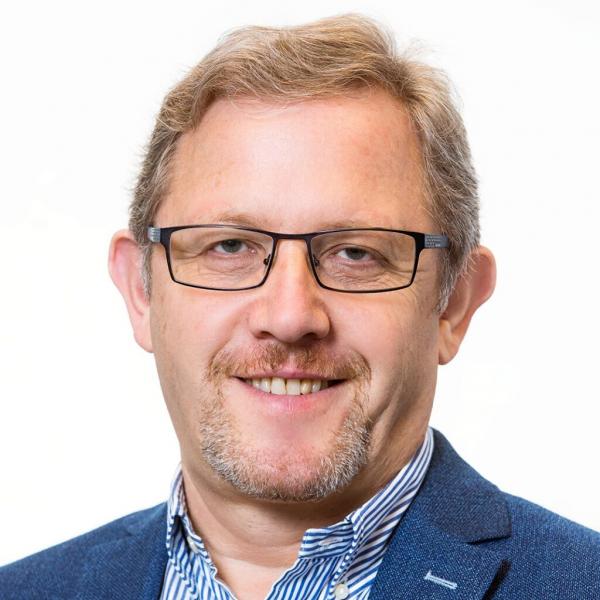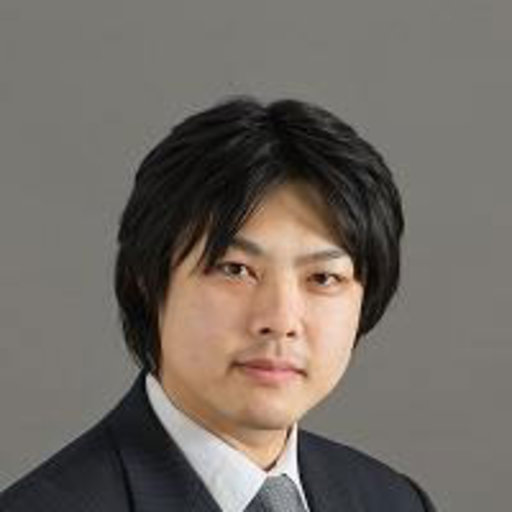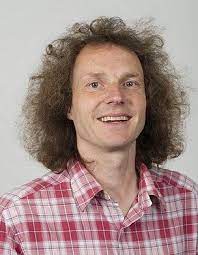Prof. Pavol Bauer, Delft University of Technology, Netherlands
 Pavol Bauer is currently a full Professor with the Department of Electrical Sustainable Energy of Delft University of Technology and head of DC Systems, Energy Conversion and Storage group. He received Masters in Electrical Engineering at the Technical University of Kosice (‘85), Ph.D. from Delft University of Technology (’95). He is also professor in Czech Republic at the Brno University of Technology (2008) and honorary professor at Politehnica University Timisoara in Romania (2018).
Pavol Bauer is currently a full Professor with the Department of Electrical Sustainable Energy of Delft University of Technology and head of DC Systems, Energy Conversion and Storage group. He received Masters in Electrical Engineering at the Technical University of Kosice (‘85), Ph.D. from Delft University of Technology (’95). He is also professor in Czech Republic at the Brno University of Technology (2008) and honorary professor at Politehnica University Timisoara in Romania (2018). - From 2002 to 2003, he was working partially at KEMA (DNV GL, Arnhem) on different projects related to power electronics applications in power systems.
- He published over 110 journal and 450 conference papers in his field (with H factor Google scholar 51, Web of Science 31), he is an author or co-author of 8 books, holds 9 international patents and organized several tutorials at the international conferences.
- He has worked on many projects for industry concerning wind and wave energy, power electronic applications for power systems such as Smarttrafo; HVDC systems, projects for smart cities such as PV charging of electric vehicles, PV and storage integration, contactless charging; and he participated in several Leonardo da Vinci, H2020 and Electric Mobility Europe EU projects as project partner (ELINA, INETELE, E-Pragmatic, Micact, Trolly 2.0, OSCD) and coordinator (PEMCWebLab.com-Edipe, SustEner, Eranet DCMICRO and Flexinet).
- He is a Senior Member of the IEEE (’97), former chairman of Benelux IEEE Joint Industry Applications Society, Power Electronics and Power Engineering Society chapter, chairman of the Power Electronics and Motion Control (PEMC) council, member of the Executive Committee of European Power Electronics Association (EPE) and also member of international steering committee at numerous conferences.DC systems and Storage integration: Two key technologies for energy transition
DC Systems and Storage Integration: Two Key Technologies for Energy Transition
- DC grids and storage are considered to be two key technologies for the connection, collection and integration of renewable energy resources, for the realization of integrated power systems, for mobile applications (electric ships, aircrafts), for new types of urban and industrial distribution power networks and to bridge and support existing AC systems. Advanced power electronic components, power converters and system protection are enabling DC grids on multiple voltages levels. Especially medium voltage DC grids are expected to play a key role in managing the higher power flows in our future distribution grids.
- Roadmap for DC and storage, different steps and research at the TUD is presented with focus on DC grids and DC microgrids and storage integration.
Prof. Seiichiro Katsura, Keio University, Japan
 Seiichiro Katsura (S’03-M’04) received his B.E. degree in system design engineering and his M.E. and Ph.D. degrees in integrated design engineering from Keio University, Yokohama, Japan, in 2001, 2002 and 2004, respectively.
Seiichiro Katsura (S’03-M’04) received his B.E. degree in system design engineering and his M.E. and Ph.D. degrees in integrated design engineering from Keio University, Yokohama, Japan, in 2001, 2002 and 2004, respectively.- From 2003 to 2005, he was a Research Fellow of the Japan Society for the Promotion of Science (JSPS). From 2005 to 2008, he worked at Nagaoka University of Technology, Nagaoka, Niigata, Japan. Since 2008, he has been at Department of System Design Engineering, Keio University, Yokohama, Japan. Currently, he is working as a Professor. In 2017, he was a Visiting Researcher with the Laboratory for Machine Tools and Production Engineering (WZL) of RWTH Aachen University, Germany. His research interests include applied abstraction, human support, data robotics, wave system, systems energy conversion, and electromechanical integration systems.
- He has been active in the IEEE IES. He serves as Associate Editor of the IEEE Transactions on Industrial Electronics, Associate Editor of the IEEE Journal of Emerging and Selected Topics in Industrial Electronics, and Technical Editor of IEEE/ASME Transactions on Mechatronics.
- He is a Member of Technical Committees on Sensors and Actuators, and Motion Control.
- He is an author or a co-author of more than 152 journal papers, 420 international conference papers with review and 32 patents. He was the recipient of The Institute of Electrical Engineers of Japan (IEEJ) Distinguished Paper Awards in 2003 and 2017, The European Power Electronics and Drives-Power Electronics and Motion Control Conference, (EPE-PEMC’08), Best Paper Award in 2008, IEEE Industrial Electronics Society (IES) Best Conference Paper Award in 2012, and JSPS (Japan Society for the Promotion of Science) Prize in 2016.
Motion-Copying System and Its Applications to Rehabilitation Robotics
- Katsura Laboratory succeeded in development of a novel method for preserving and reproducing human motion based on motion control technology. This method is called a "motion-copying system (MCS)" as it is a spatio-temporal coupler of real-world haptic information. As with sound and visual information, the MCS is capable of preserving and reproducing the raw force and position information of human operators. Once human motions are preserved as digital data, it is possible not only to analyze the experts' skills but also to transfer them to a robot. In addition, quantitative training including rehabilitation becomes possible. In the lecture, recent challenges for medical applications will be also presented.
Prof. Trygve Thomessen, PPM Robotics AS, Norway
 Prof. Trygve Thomessen is the Managing Director of PPM Robotics AS, in Trondheim, Norway. He has successfully managed the company since 2001. PPM is a high-tech robotics company, originally providing cutting-edge industrial robot installations by combining standard technology with recent results from R&D. PPM changed strategy in 2020, to utilize our strong competence towards service robots in nursing homes for elderly people.
Prof. Trygve Thomessen is the Managing Director of PPM Robotics AS, in Trondheim, Norway. He has successfully managed the company since 2001. PPM is a high-tech robotics company, originally providing cutting-edge industrial robot installations by combining standard technology with recent results from R&D. PPM changed strategy in 2020, to utilize our strong competence towards service robots in nursing homes for elderly people.- Mr Thomessen was during 2005-2012 Professor in industrial robotics at The Norwegian University of Science and Technology, NTNU in Trondheim. He continued as Industrial Professor at University in Budapest, BUTE, 2013 – 2021, and is currently Industrial Professor at University of Debrecen in Hungary. He is also Visiting Professor at Chuo University in Tokyo. Prof. Thomessen and PPM, have a long tradition to collaboration with universities about MSc, PhD and internship.
Social, Communicative, Multipurpose Service Robot for Nursing Homes (Service Robots for Elderly Homes – A Multidisciplinary Challenge with a Considerable Future Potential)
- The increased life expectancy and welfare enhancement, combined with cost / benefit requirements, stresses the utilization of resources in nursing homes. Even for a small country, like Norway, there will be lack of 40k workers in elderly care 2030. In 2060, the population in Norway will not be sufficient, to cover both the industry and the elderly care. Thus, there will be a considerable demand for intelligent service robots during the next years.
- Luckily, the industry has demonstrated the potential for robots operating together with humans in open environments. However, this is done under that conditions that the human have sufficient training and when required, are wearing the necessary protective cloths.
- This differs significantly from the conditions in nursing homes, where the robots must operate naturally and kindly together with elderly people with impaired communicative and cognitive skills.
- Naturally, the conditions in nursing homes, rise considerable challenges to the robot technology, in order to be accepted by the patients, being able to communicate properly, and to fulfill the requirements to safety and security.
- The presentation will address a set of challenges and current R&D going on, with the intention to invite to further R&D collaboration through projects, or students on MSc or PhD level.
Prof. Pat Wheeler, University of Nottingham, UK
 Prof. Pat Wheeler received his BEng (Hons) degree in 1990 from the University of Bristol, UK.
Prof. Pat Wheeler received his BEng (Hons) degree in 1990 from the University of Bristol, UK.- Prof. Pat Wheeler received his PhD degree in Electrical Engineering for his work on Matrix Converters at the University of Bristol, England in 1993. In 1993 he moved to the University of Nottingham and worked as a research assistant in the School of Electrical and Electronic Engineering.
- In 1996 he became a lecturer in Power Electronic Systems with the Power Electronics, Machines and Control Group at the University of Nottingham, UK, becoming a Senior Lecturer in 2003, and a Full Professor in January 2008. He was Head of the Department of Electrical and Electronic Engineering at the University of Nottingham from 2015 to 2018.
- He is currently the Head of the Power Electronics, Machines and Control Research Group, Global Director of the University of Nottingham’s Institute of Aerospace Technology and was the Li Dak Sum Chair Professor in Electrical and Aerospace Engineering. He is a member of the IEEE PELS and is currently IEEE PELS Vice-President for Technical Operations.
- He has published over 750 academic publications in leading international conferences and journals.
Trends and Challenges in Electrification of Aircraft Propulsion Systems
- This plenary presentation will consider the roadmaps for aircraft propulsion electrification and will draw on comparisons with other transportation electrification platforms and the technological developments which are going to be needed to make these visions possible.
- These developments and technology challenges will include the electrical drivetrain design and the applications of motor design and power converter topology choices as well as the impact of emerging technology advances including cooling techniques, integration, system optimization and wide-bandgap semiconductors. The Challenges for us as Power Electronics or Electrical Machines experts will also be considered.
Legutóbbi frissítés:
2023. 02. 03. 10:50